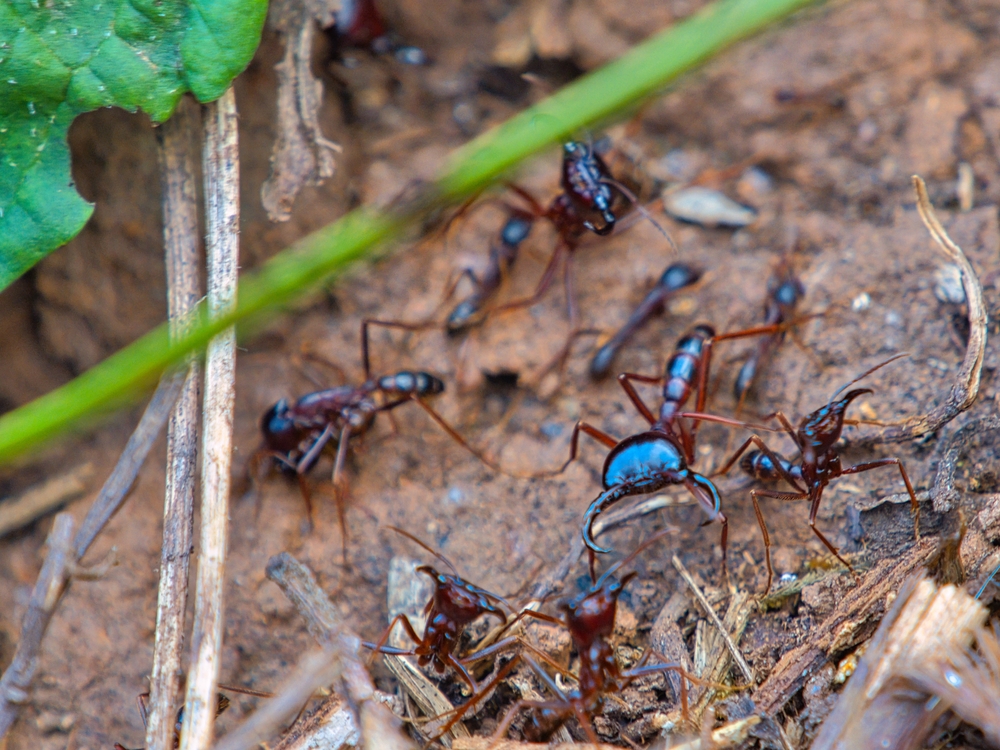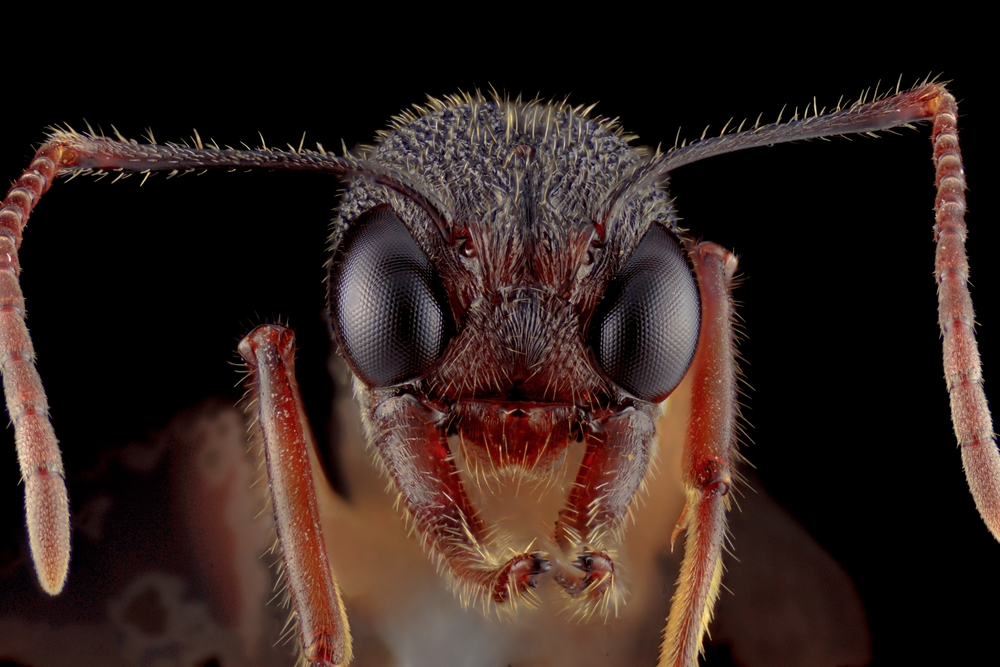Your cart is currently empty!
A Fossil Hidden in Amber Amazes Scientists Who Describe It as “Like Finding a Diamond”

Scientists recently took a closer look at a small piece of amber and were surprised to find a fossilized ant preserved with remarkable clarity, a discovery that immediately suggested it belonged to a lineage not known to exist in the Caribbean. The specimen offered rare and direct evidence that dirt ants once lived on the islands before disappearing millions of years ago. The find also encouraged researchers to think more deeply about how certain species endure major environmental shifts while others vanish, reminding us that even the smallest creatures can leave behind important clues about how life on Earth has changed over time.

A Tiny Fossil With a Big Story to Tell
What looked like an ordinary piece of Dominican amber turned into an unexpected window into the ancient Caribbean. When scientists took a closer look, they found an ant preserved so clearly that its features stood out immediately. The shape and proportions did not match any dirt ant species known from present day neotropical forests, which prompted researchers to reconsider where this secretive lineage once lived. What began as a simple examination became the first clue that these ants had a much broader history than anyone realized.
The fossil revealed that dirt ants, now found only from Costa Rica through southern Brazil, once occupied Caribbean soil before disappearing millions of years ago. Its exceptional preservation allowed the research team to study a community that no longer exists, offering insight into how species move through environments and sometimes vanish entirely. The moment carried enough significance for researcher Gianpiero Fiorentino to describe it as “like finding a diamond,” a phrase that reflects how rare it is for a specimen to shift scientific understanding this clearly.
For biodiversity researchers, this fossil does more than add a single species to the historical record. It opens a missing chapter in the story of predator ants, showing that ancient island ecosystems supported a wider range of life than previously documented. The discovery also encourages a broader look at how animals respond to long term environmental change and why some lineages continue while others fade into the past. Even a tiny insect captured in amber can reshape what we know about the natural world and the forces that guide its evolution.
An Unexpected Visitor From the Ancient Caribbean
As researchers continued to study the amber specimen, they realized they were not looking at a familiar member of the forest floor. Instead, they had uncovered Basiceros enana, a species never before documented in the Caribbean. The fossil was described in Proceedings of the Royal Society B and its features confirmed it was the first recorded dirt ant preserved in Dominican amber. Even more surprising was its size. This ancient worker was noticeably smaller than every known living Basiceros species, yet it still carried the traits that define this secretive group.

Modern dirt ants are known for their impressive camouflage abilities. Their bodies are covered with hair structures that help soil and leaf fragments cling to them, allowing the ants to disappear into the ground cover. Today these species live only from Costa Rica to southern Brazil, and no living dirt ant has been found in the Caribbean. The fossil of Basiceros enana shows that the islands once supported these elusive insects before they vanished during the Miocene, leaving no surviving populations behind.
Phil Barden, senior author of the study and associate professor of biology at NJIT, explained how this discovery reshapes expectations about where species once lived. He noted, “Often lineages will have what appear to be fairly straightforward biogeographic histories. If you find a group of animals that only live in South America up to Costa Rica today, you really have no reason to expect that their early relatives lived in the Caribbean.” He added that the fossil “underscores how the distribution of living species can belie the complex evolutionary history of life on our planet.” In other words, the natural world holds more surprises than its present day map reveals.
The Tiny Specialist Hidden in Ancient Forests
Closer study of the fossil showed that Basiceros enana carried the full build of a ground dwelling predator despite being only about five point thirteen millimeters long, making it the smallest member known in its lineage. The study in Proceedings of the Royal Society B confirmed that this species was distinct and not a scaled down version of any modern dirt ant. Even at this size, the ant displayed the structures needed to survive in dense leaf litter.

One of its most important traits is the layered coat of hairs that helped soil and leaf pieces cling to its body. The longer hairs lifted debris while the shorter ones held it in place, allowing the insect to blend almost perfectly with the forest floor. The fossil shows that this level of camouflage had already developed at least sixteen million years ago and that these ants were using advanced concealment long before modern species continued the pattern.
The specimen also preserved an upturned propodeal spine, a trapezoid shaped head, and mandibles lined with twelve triangular teeth. These features show that B. enana was a focused predator rather than a generalist forager. For researcher Gianpiero Fiorentino, the clarity of these traits made the discovery stand out, which is why he described it as “like finding a diamond.” The fossil provides a rare look at a specialized lineage that once moved through Caribbean forests but no longer has representatives today.
How Amber Protects the Smallest Creatures
Amber is often admired for its warm color, but its real value comes from the way it preserves tiny organisms that would ordinarily disappear without a trace. When tree resin traps an insect, the material hardens and seals the body away from air, moisture, and decay. This creates a natural time capsule that can survive for millions of years with remarkable detail. Scientists rely on amber fossils because they protect structures that rarely remain intact in soil or stone, including delicate hairs, mouthparts, and antennae. These features allow researchers to study the daily lives of ancient insects rather than only their general shape.

The fossil of Basiceros enana demonstrates how powerful this preservation can be. The clarity of the amber allowed scientists to examine the ant’s traits with little distortion, making it possible to identify camouflage adaptations, predatory structures, and overall body form. For modern biologists, this level of preservation supports more accurate comparisons between extinct and living species. It shows how resin can capture a moment in the forest and keep it unchanged long enough for researchers to uncover new information about ecosystems that no longer exist.
What Ancient Ants Teach Us About Forest Microhabitats
Every forest is built on countless microhabitats that support organisms too small to notice at a glance, and fossils like Basiceros enana help scientists understand how these hidden spaces once functioned. Leaf litter layers, soil pockets, and decaying wood all create unique conditions that shape which species can survive in a given area. Predatory ants occupy some of the most active microhabitats, where they help regulate insect populations and influence how nutrients move through the ground.

The presence of B. enana in amber suggests that ancient Caribbean forests supported a complex network of these small environments. The ant’s specialized traits indicate that it lived in tight spaces within the forest floor where camouflage and precision mattered. For researchers, this information offers a clearer picture of how microhabitats operated millions of years ago and how their structure compares to similar environments today. Understanding these small ecological zones gives scientists a more complete view of how forests develop, adapt, and maintain balance over long periods of time.
A Final Look at a Tiny Clue From the Distant Past
The discovery of Basiceros enana reminds us that even the smallest organisms can reshape what we know about the natural world. A single ant sealed in amber carried enough detail to rewrite part of the Caribbean’s ecological history and reveal how ancient forests once functioned. Its features show that predator ants played important roles in microhabitats that no longer exist, and its presence in the region confirms that species once moved through landscapes in ways that modern distributions do not reflect.

Finds like this help scientists understand how ecosystems change across long stretches of time and why some species remain while others disappear. They also highlight the value of preserved specimens that capture moments from environments that have vanished. For readers who care about wildlife and the health of natural habitats, this fossil offers a simple message. Every creature leaves a trace, and sometimes that trace becomes the key to understanding how life on Earth has adapted and survived through ages of transformation.
